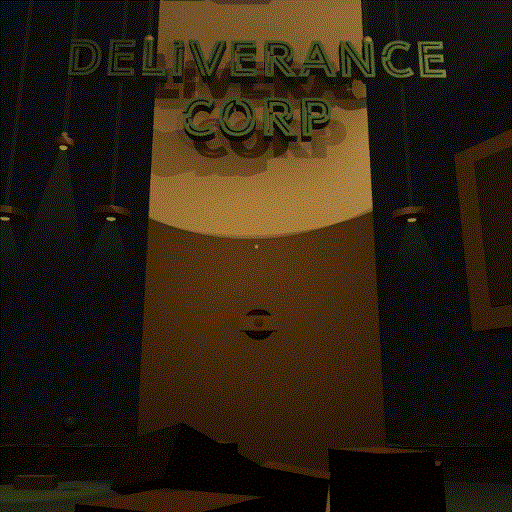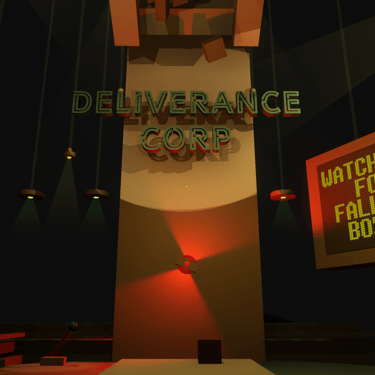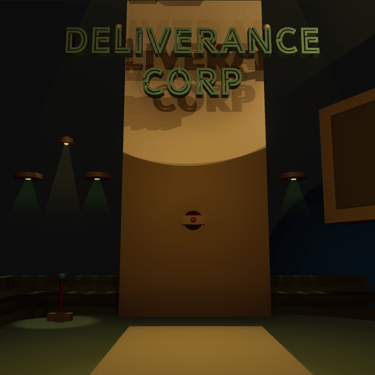Deliverance
Optimizing Physics-Based Systems
Eduardo Martinelli
Deliverance CORP. immerses players in the complex world of a parcel delivery mega-corporation, where they tackle the role of managing the sorting section. This single-player puzzle game challenges players with it's fun physics-based interaction system. It features optimization techniques such as occlusion culling, positional audio and rope systems.
Advanced Object Optimization: The heart of Deliverance lies in its advanced optimization techniques, including culling, pooling, and Level of Detail (LOD) systems, designed to handle numerous objects simultaneously without compromising performance. These technical innovations ensure that players experience smooth gameplay, even in scenarios bustling with activity.
Physics-Based Interactivity: At the core of the gameplay is a semi-realistic physics system that allows for natural interactions within the game world. Players can manipulate objects with a satisfying heft and momentum, engaging with levers, ropes, and pistons in ways that feel intuitive yet challenging to master. This system is finely tuned to balance the fun of puzzle-solving with the authenticity of object behaviors, creating a rewarding and immersive experience.
Procedural Audio for Immersion: Complementing the visual and physical realism is a dynamic audio system that brings the game's environment to life. With positional sound and smart prioritization, the system ensures that more significant sounds take precedence, enveloping players in a truly immersive soundscape that responds to their actions.
Developed in Unity using C#, Deliverance CORP. exemplifies the seamless integration of robust design principles and architectural patterns. The game's event-driven architecture, coupled with various design patterns, lays a foundation for scalable and flexible development, facilitating rapid iterations and expansions.
Challenges and Innovations: Implementing the physics-based interaction system presented a unique challenge, requiring a delicate balance between realism and playability. The innovative use of dynamic force balancing and invisible springs allows players to engage with the game's world in a manner that is both intuitive and deeply satisfying.Deliverance CORP. immerses players in the complex world of a delivery mega-corporation, where they tackle the role of managing the sorting section. This single-player puzzle game challenges players to allocate packages using increasingly sophisticated methods to avoid termination, making every decision critical.
Advanced Object Optimization: The heart of Deliverance lies in its advanced optimization techniques, including culling, pooling, and Level of Detail (LOD) systems, designed to handle numerous objects simultaneously without compromising performance. These technical innovations ensure that players experience smooth gameplay, even in scenarios bustling with activity.
Physics-Based Interactivity: At the core of the gameplay is a semi-realistic physics system that allows for natural interactions within the game world. Players can manipulate objects with a satisfying heft and momentum, engaging with levers, ropes, and pistons in ways that feel intuitive yet challenging to master. This system is finely tuned to balance the fun of puzzle-solving with the authenticity of object behaviors, creating a rewarding and immersive experience.
Procedural Audio for Immersion: Complementing the visual and physical realism is a dynamic audio system that brings the game's environment to life. With positional sound and smart prioritization, the system ensures that more significant sounds take precedence, enveloping players in a truly immersive soundscape that responds to their actions.
Developed in Unity using C#, Deliverance CORP. exemplifies the seamless integration of robust design principles and architectural patterns. The game's event-driven architecture, coupled with various design patterns, lays a foundation for scalable and flexible development, facilitating rapid iterations and expansions.
Challenges and Innovations: Implementing the physics-based interaction system presented a unique challenge, requiring a delicate balance between realism and playability. The innovative use of dynamic force balancing and invisible springs allows players to engage with the game's world in a manner that is both intuitive and deeply satisfying.




